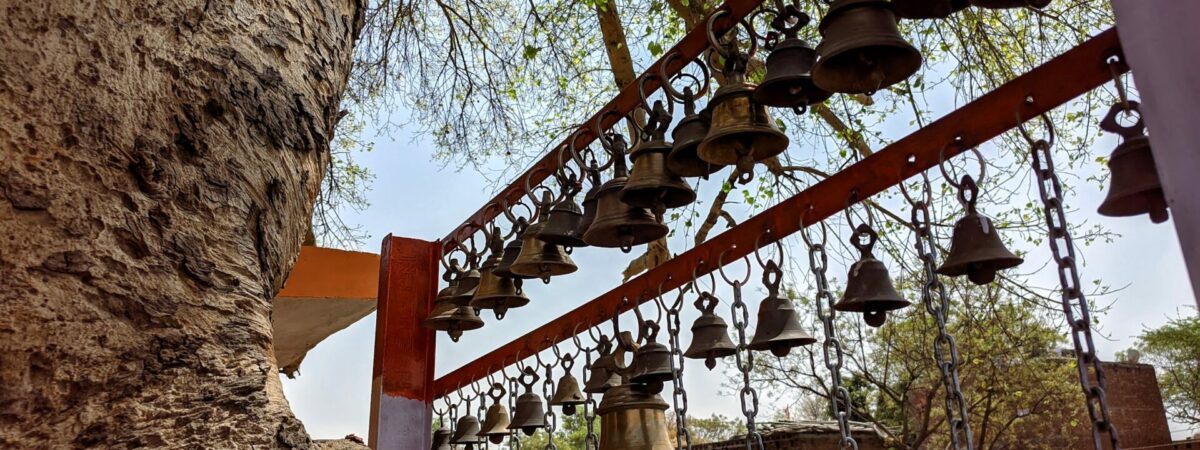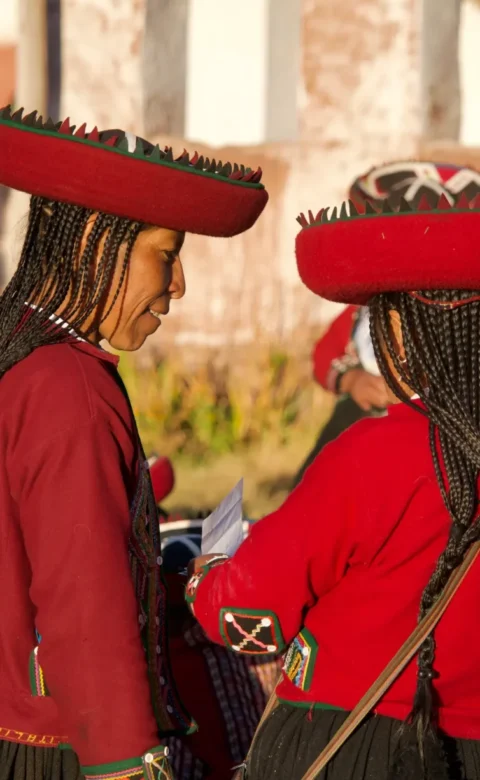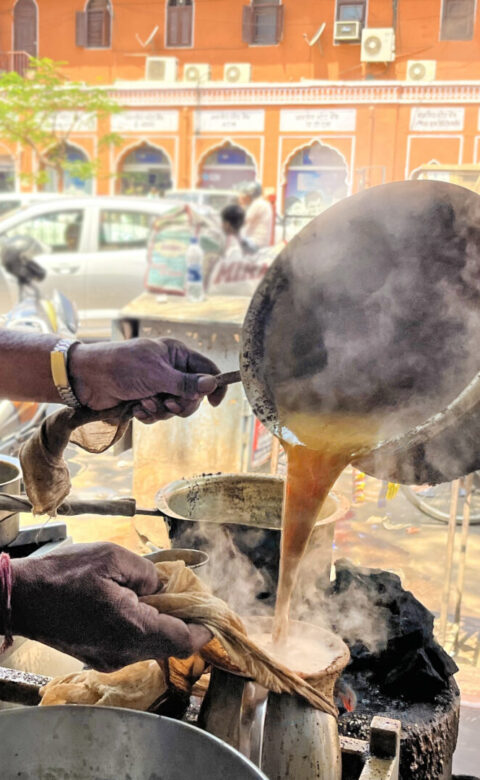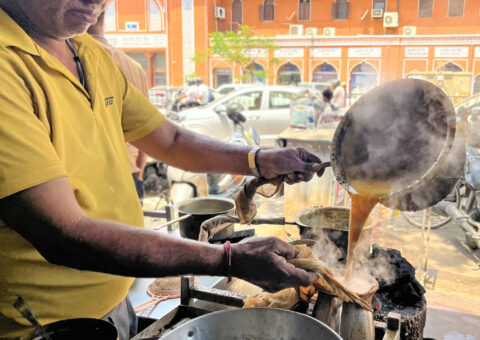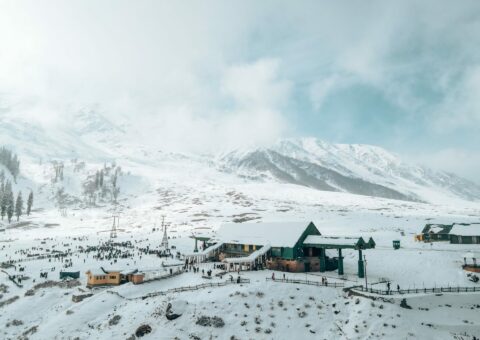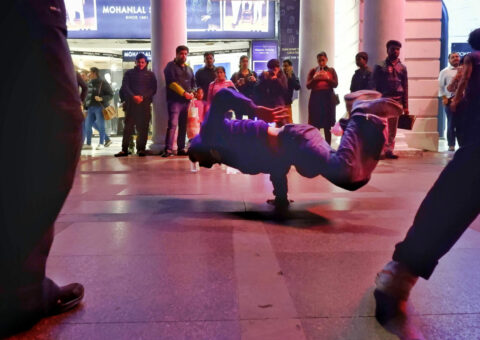Lama Wale Baba, the village deity of Angautha, was just a fascinating story for Aniket Singh Chauhan until he witnessed the power of faith on his paternal ancestral homelands.
Toward the very end of a merry March, my family planned a trip to our paternal ancestral home at Angautha in the northern Indian state of Uttar Pradesh. My mother told me I had not visited the place since I was three years old. No wonder I couldn’t recollect anything about it.
When I asked my father about the reason behind this trip, he told me our family had just renovated the shrine of our village deity, Lama Wale Baba, and we were going to participate in the inauguration ceremony.
India is huge. With a population of more than 1.4 billion people, it is well on its way to being the world’s most populous country. While Indian cities like Delhi, Mumbai, and Bengaluru are among the biggest in the world, they only house around 35 per cent of the total Indian population. A large majority of Indians still live and thrive in the countryside.
It is in the countryside on this trip that I found a unique blend of culture, religion, and faith in the form of village deities, or Gram Devata / Gram Devi.
Honestly, I was confused. I had no idea who our village deity was. I also didn’t know why our family renovated the shrine when my grandfather had moved out of the village way back in the late 1960s. But I was going to get my answers soon enough.
We decided to leave a day early to explore the place before the event. After a six-hour drive, we reached the shrine on a bright sunny afternoon. The shrine dedicated to Lama Wale Baba was located amidst the lush green farms of the village. With small bells and a minimalist structure, it was built around a huge peepal tree (sacred fig), one of the most sacred trees in India. The place was quaint, quiet, and peaceful with the faint ringing of the bells following a slight breeze.
We were welcomed there by my distant grandfather, Narendra dadaji (“dadaji” is an Indian word used to address an elderly male family member) with a big smile and a salutation: “Jai Lama Wale Baba ki.” Glory to Lama Wale Baba.
Hearing this, I was confused about the reply. While I could simply repeat the salutation — as is the practice — how could I wish glory to someone I didn’t even know? At a loss for words, I repeated, “Jai Lama Wale Baba ki,” while still having many questions about our Gram Devata, or village deity. Thankfully, Narendra dadaji came to my rescue.
He told me that, for the residents of Angautha, Lama Wale Baba is the most important deity to be worshipped, regardless of faith. As the village deity, the villagers believe it is Lama Wale Baba who protects and guards the village against all adversities, be it droughts, pest attacks, or a bad harvest.
He further added that, while the principal deities in Hinduism (like Krishna, Shiva, Sarasvati, and Ganesha) are characterised as divine beings that transcend the human realm, in ancient scriptures, these village deities are often represented as ordinary folks who attained divinity with their good karma or actions. So, for the village folk, their Gram Devata is the guardian of the village who takes care of the villagers as his own children.
My father, too, pitched in to tell me a story about how Angautha came about revering Lama Wale Baba.
Way back in the 1970s, one of my relatives had to go out to the city for some work. But midway, the rain started pelting down. The fields and the roads were reeling under the rain’s wrath. My relative was now lost and soaking wet, with possibly no place to go. In all of this, he had the nerve to calm himself down a bit and pray to Lama Wale Baba for help. And it was some help he got.
My father told me that, seemingly out of nowhere, a dog started barking behind his back. Instantaneously, my relative had the urge to follow him. (Spoiler alert: it was a great decision.)
The dog slowly and surely navigated through the flooded scene and led my relative to safety. “There are many stories like these around the village,” Narendra dadaji said with a serene smile. He loves to smile.
After getting to know the story behind Lama Wale Baba, I could finally make sense of the village’s reverence toward him. Yet, until then, that was all that Lama Wale Baba meant to me: a fascinating story.
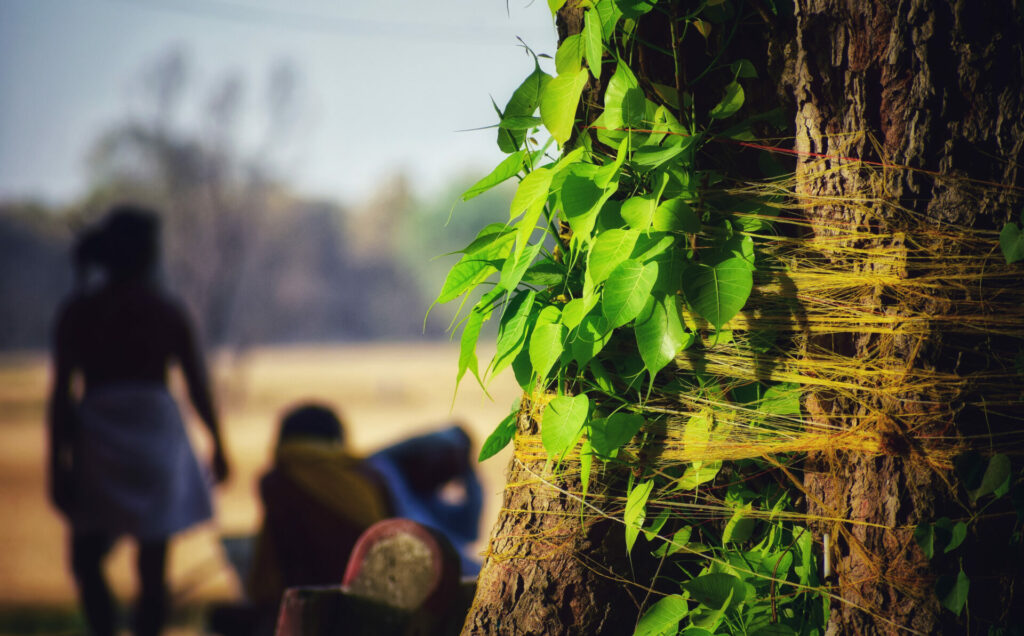
The day of the inauguration ceremony had finally arrived. Empty fields in front of the shrine were now transformed into a bustling scene. Some people decorated the shrine. Others prepared the fields and food around the temple for the community feast, which was to happen later that day after a traditional and elaborate prayer of the deity. I also pitched in and decorated the place with fresh marigold flowers, still replaying the stories that I had heard the day before.
The prayer ceremony was done by early noon, and it was time for the community feast. Just as we were about to start the feast, somebody behind me yelled, “It’s a honeybee attack!”
Moments after this frantic announcement, the place was a mess. Everyone was running in different directions, trying to save themselves from bee stings. Bees were everywhere and, for a moment, I thought we were gone for good.
Suddenly, one of the elder villagers warned us, “Do not kill the bees. Just ask Lama Wale Baba for help and slowly walk away.” In the heat of the moment, I followed the instructions. I asked for help and walked away.
As I looked back, the same villager was himself standing amongst the bees with his hands folded in a namaste, prayer-like position and head bowed down. To my amazement, not only did the bees not hurt him, but they also slowly started going away. The moment was surreal, and soon normal activity returned to the field.
Seeing this, everyone around the shrine said “Jai Lama Wale Baba ki” in unison. This time, even I said it voluntarily, after all I had just witnessed.
During the entire meal and afterwards, we all discussed the incident. Even though I still can’t surely explain what I experienced, I can say I definitely saw the power of faith that day. Now the tales of Lama Wale Baba aren’t just anecdotes to me; they are stories of a feeling that is perplexing yet peaceful and confusing yet comforting.
Now I understand the reason we renovated the shrine. For we may move out of our hometowns and villages, but we never leave behind these experiences.

